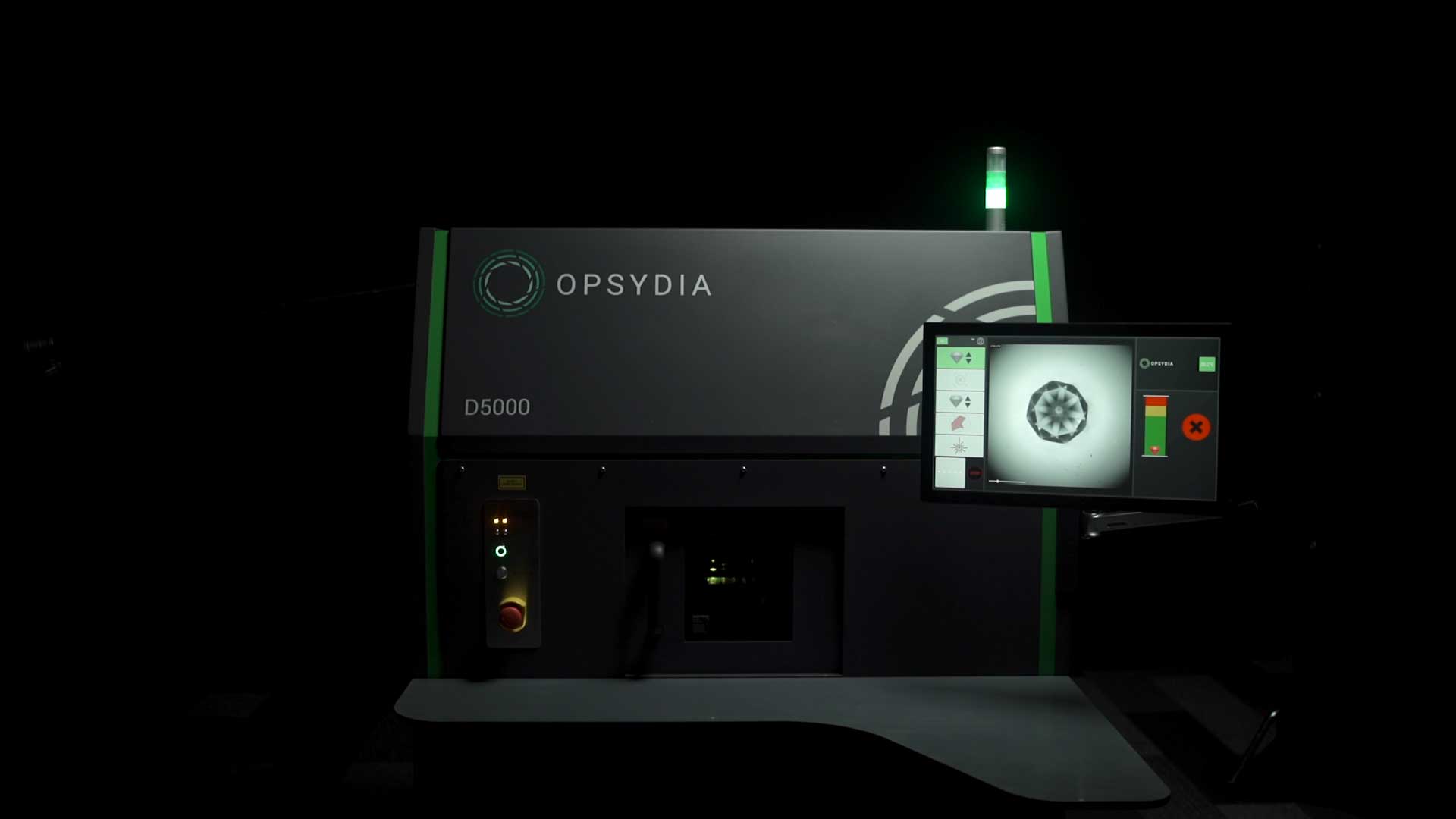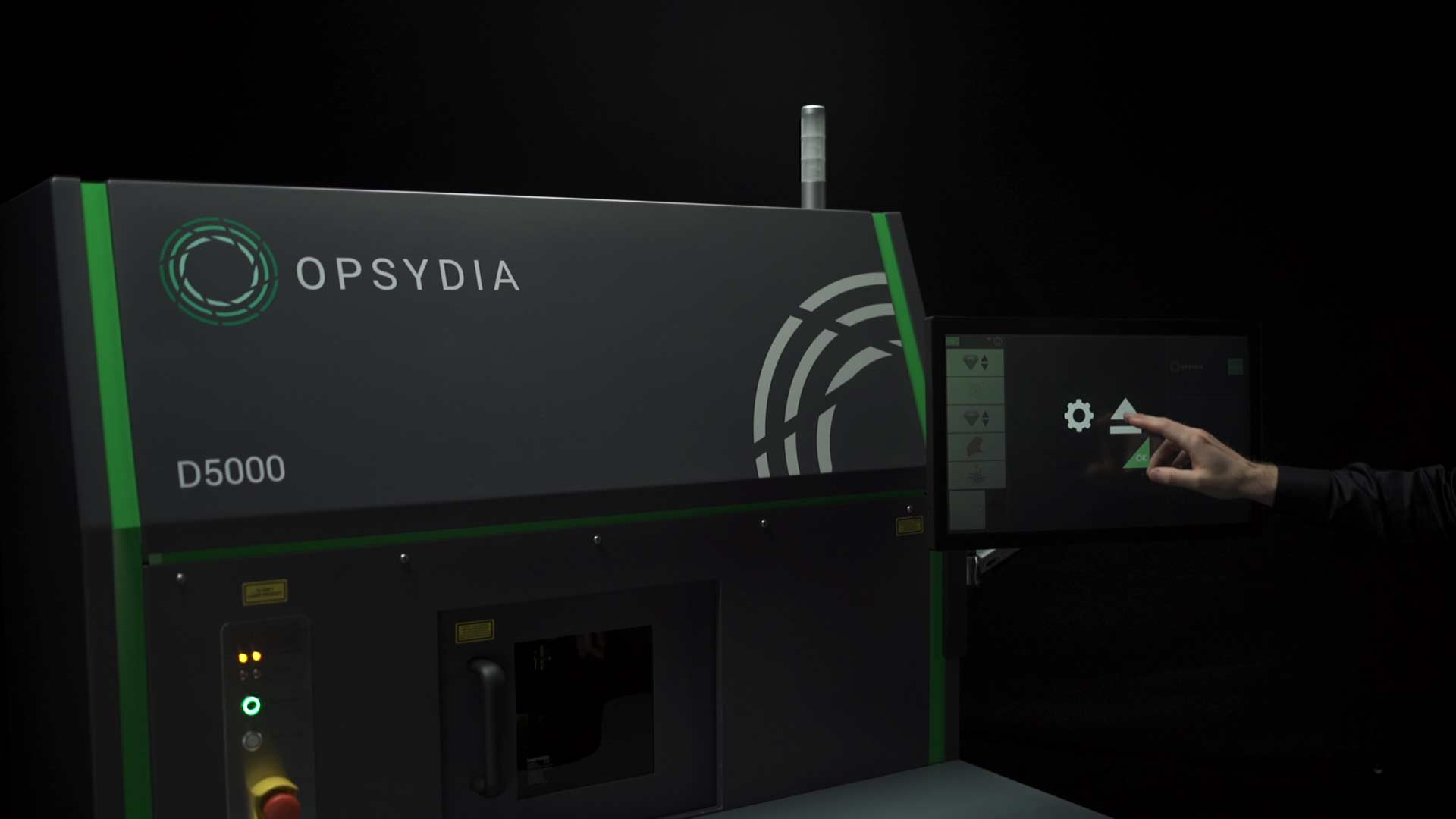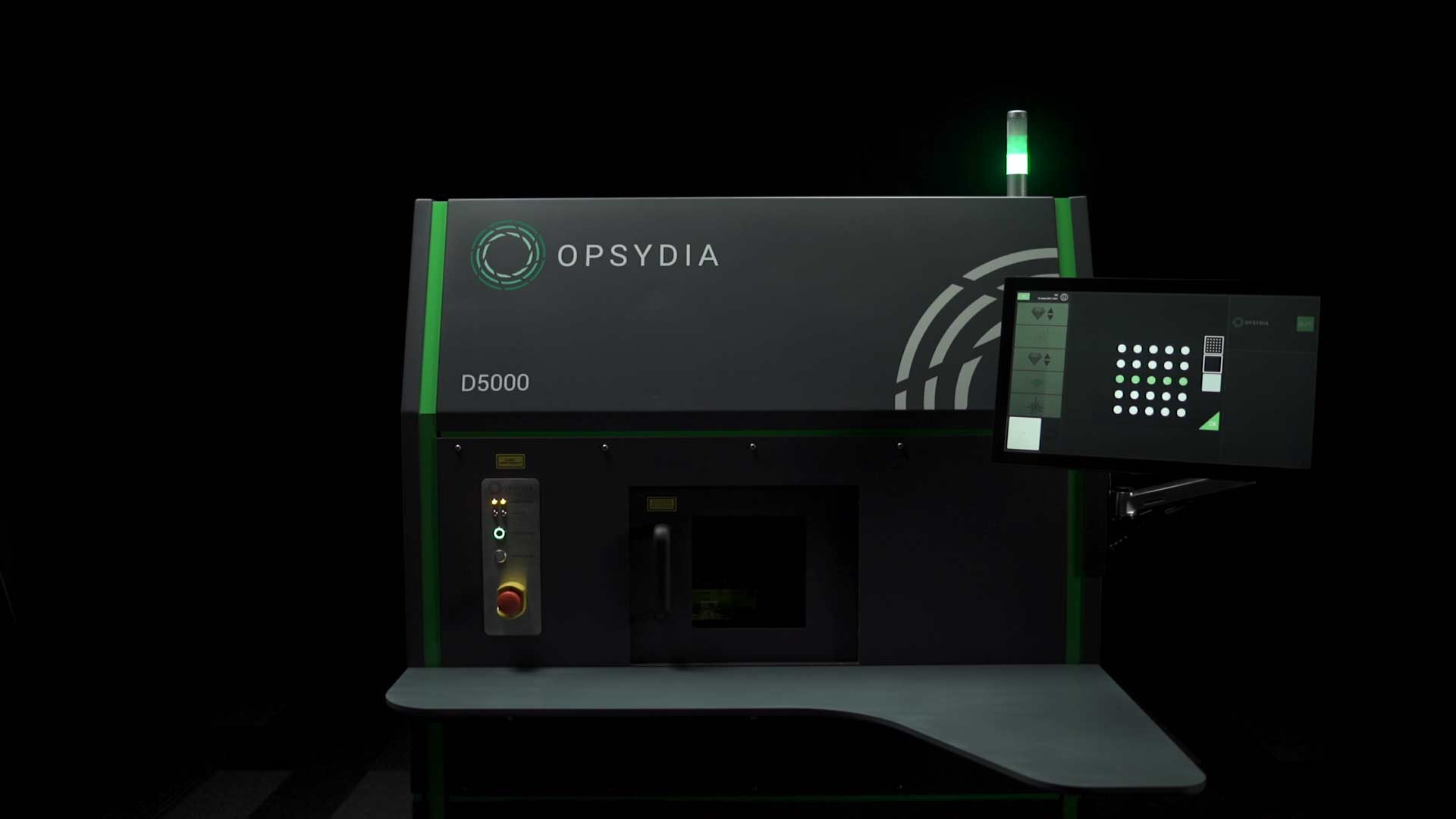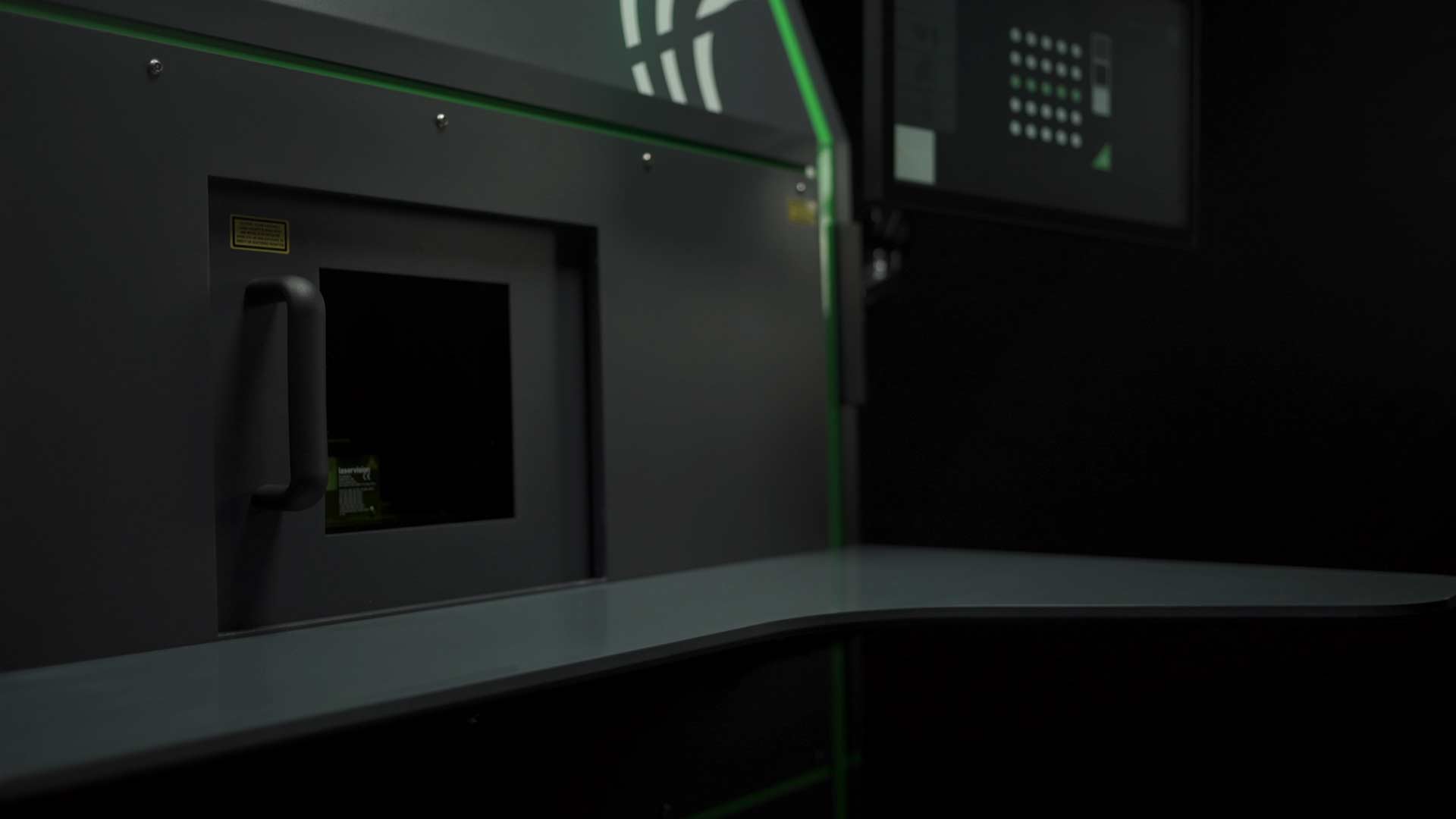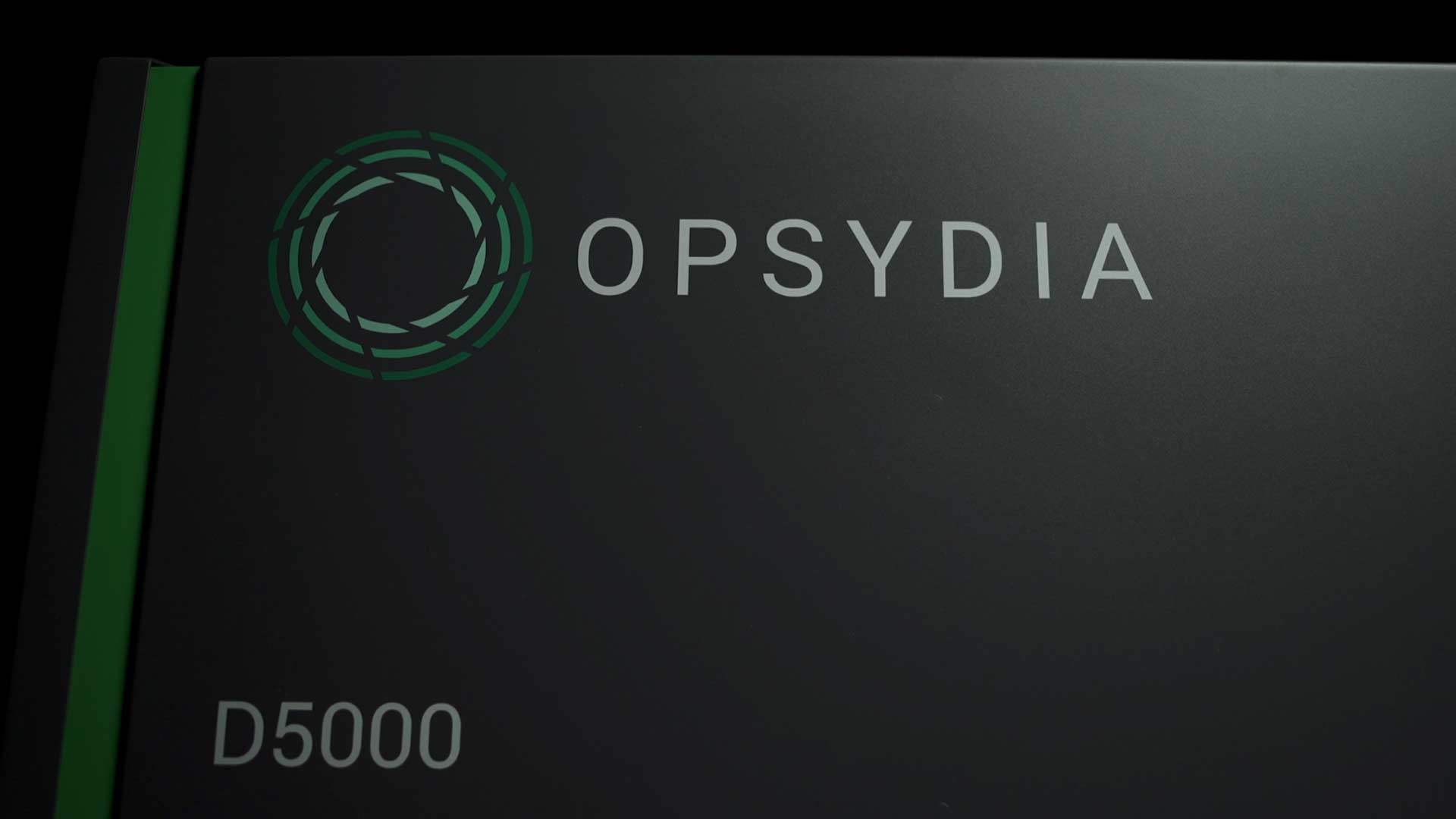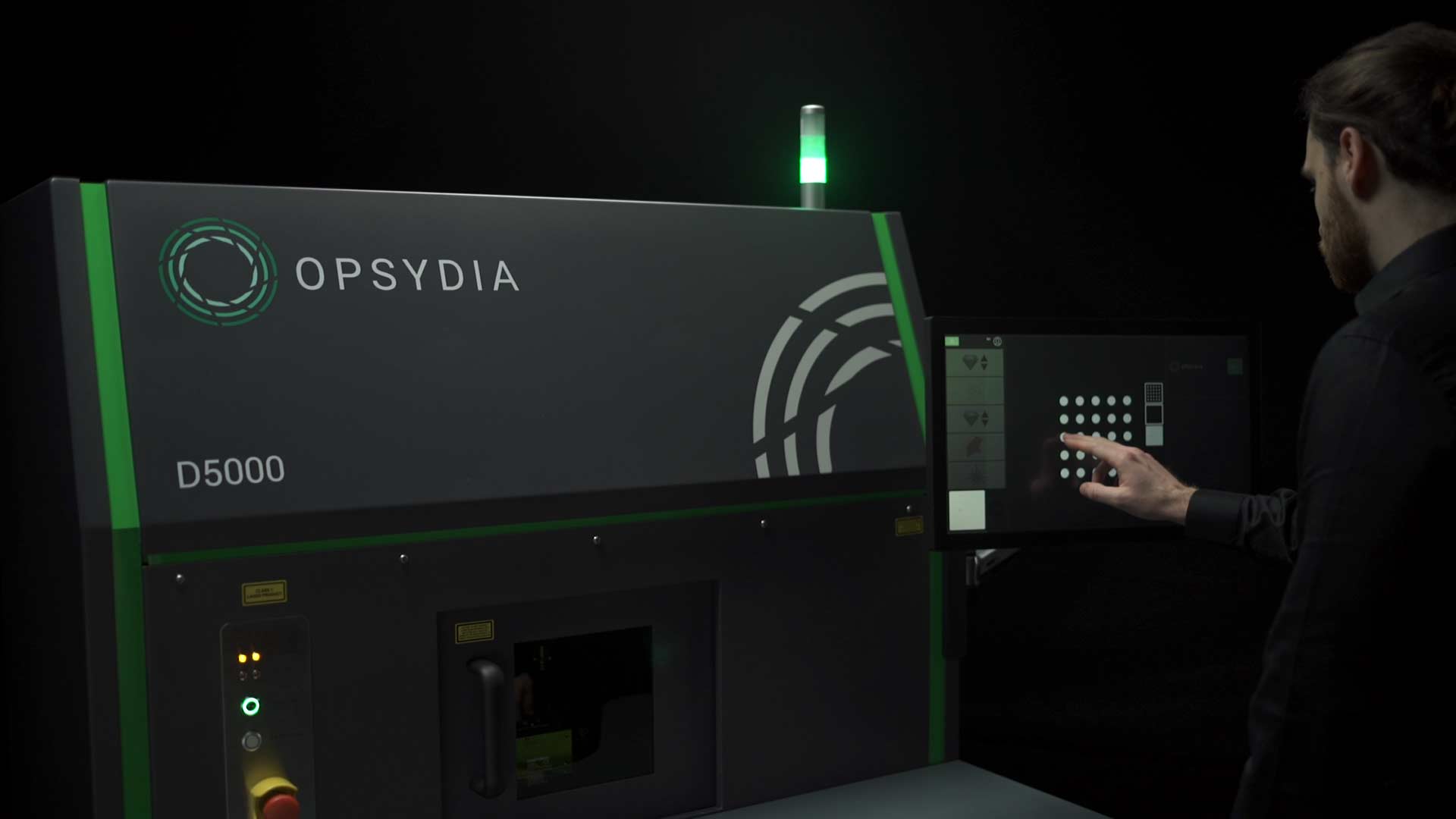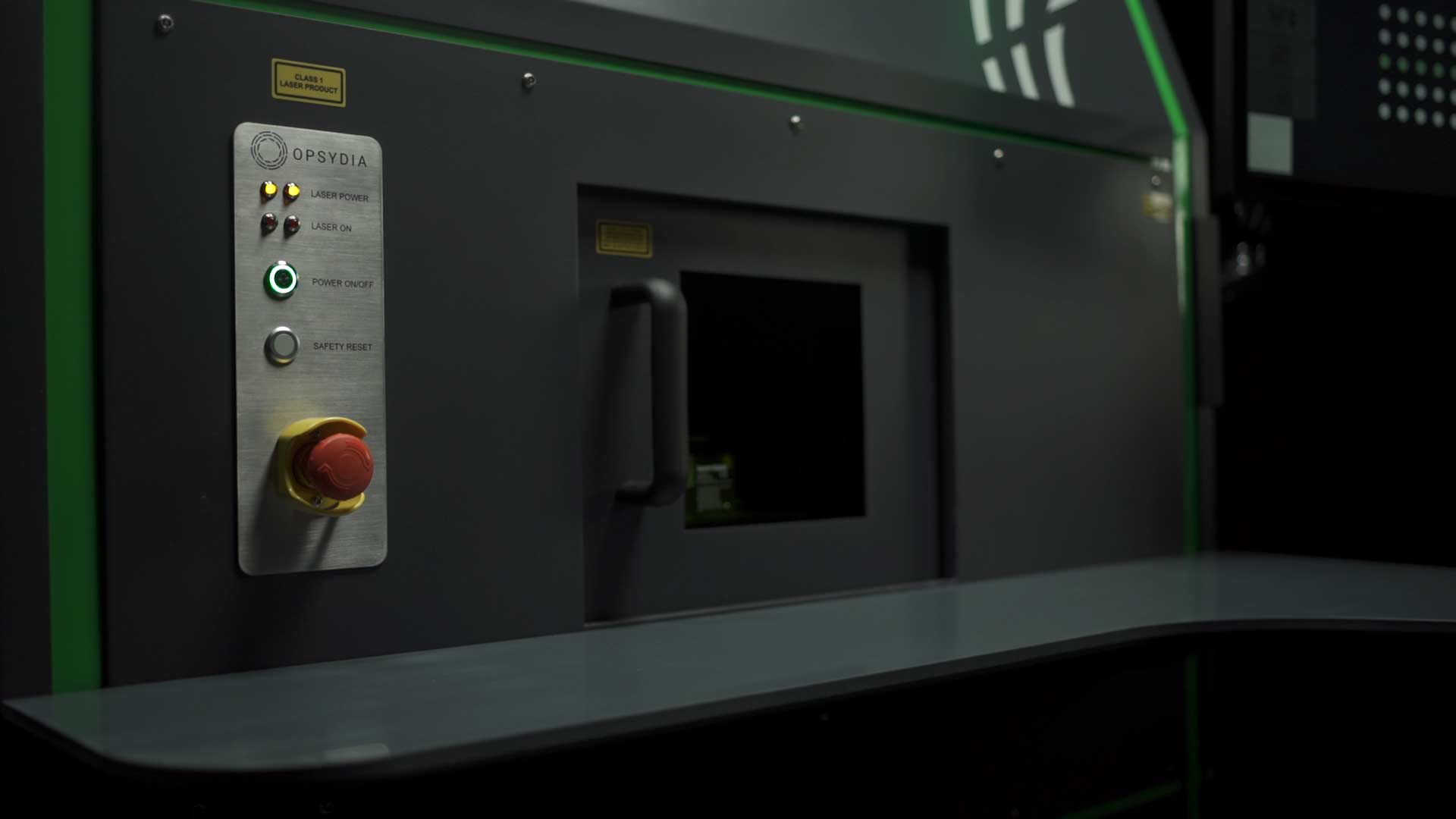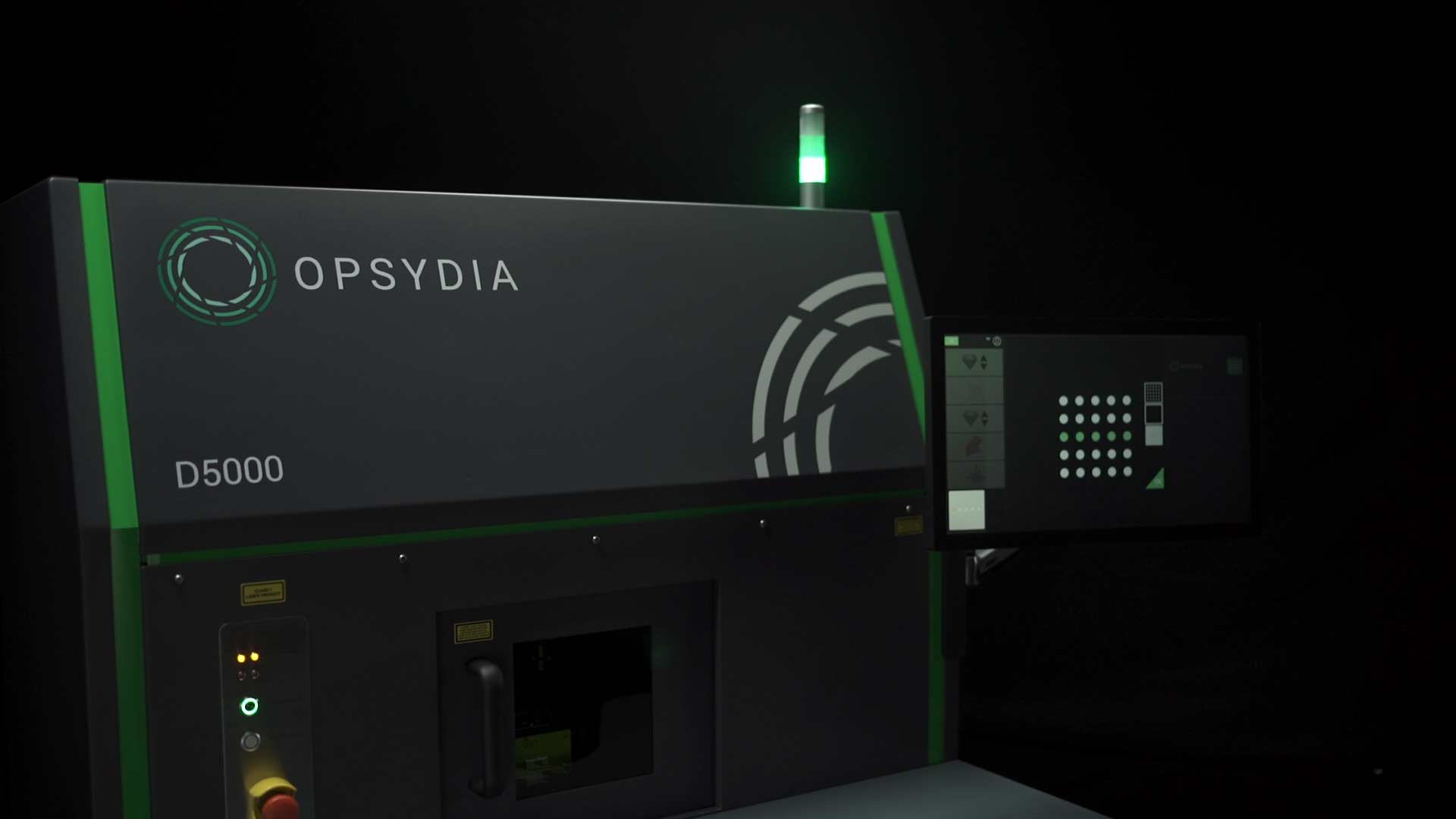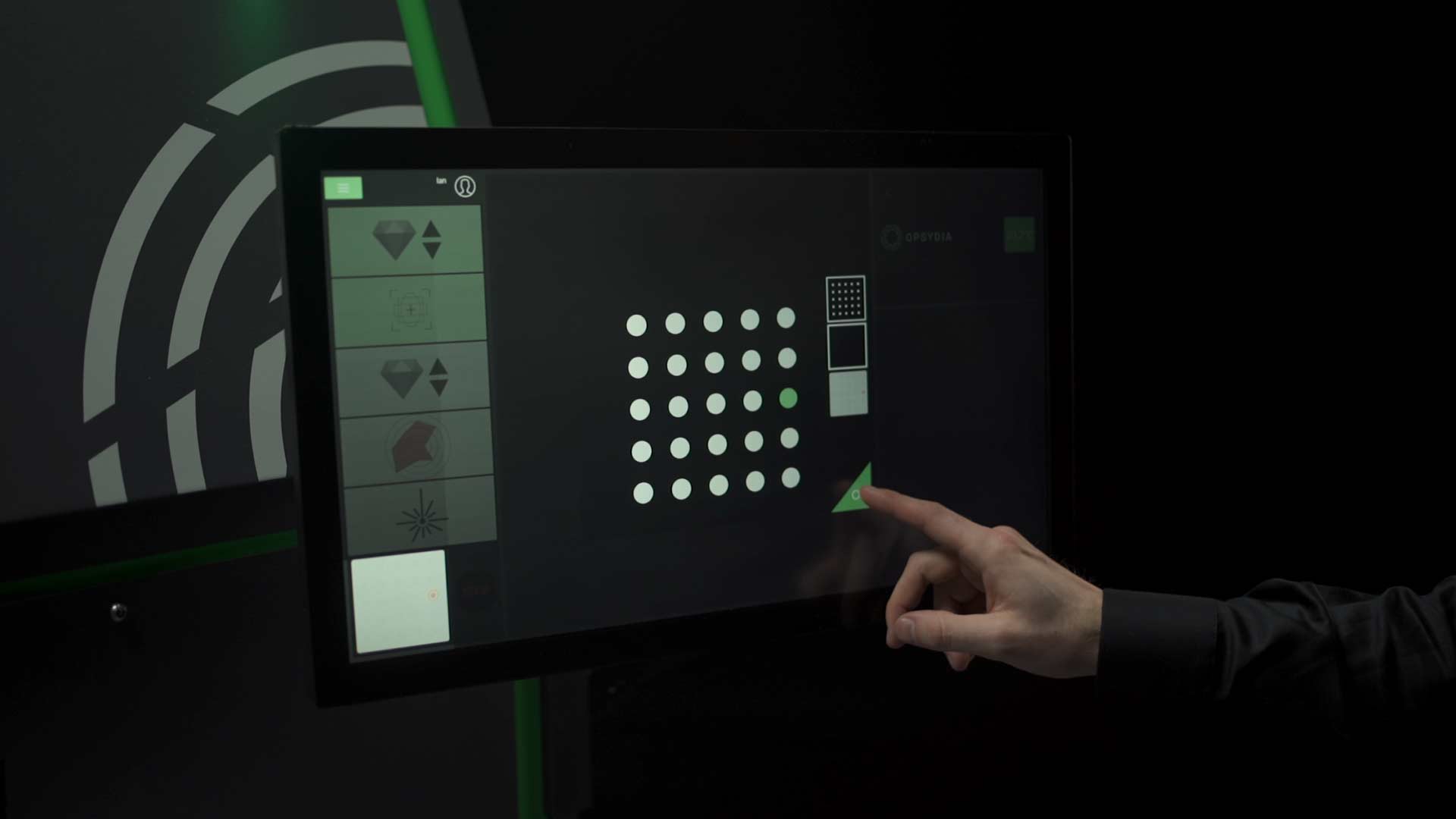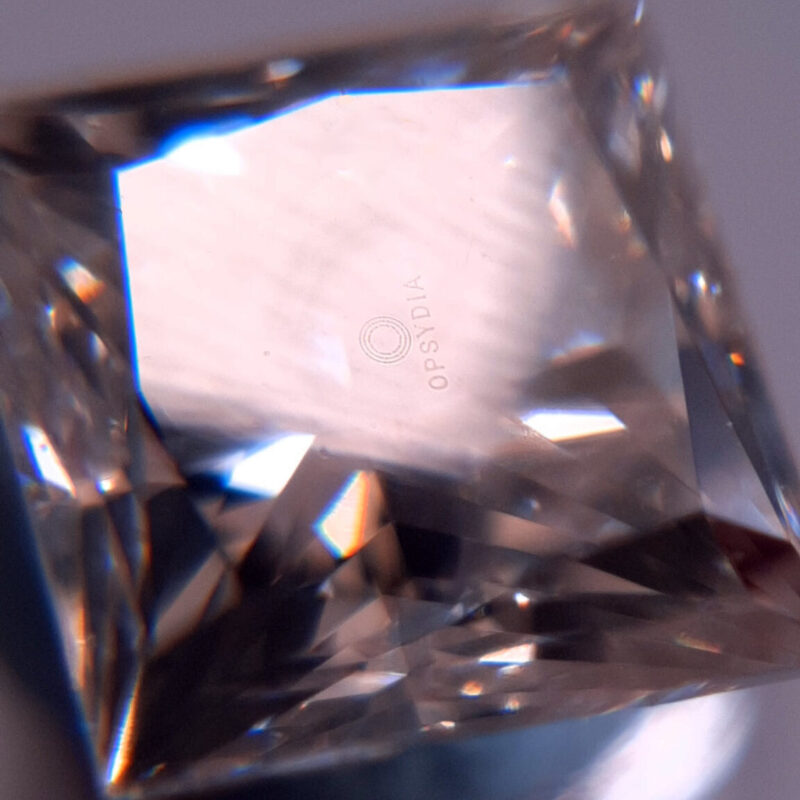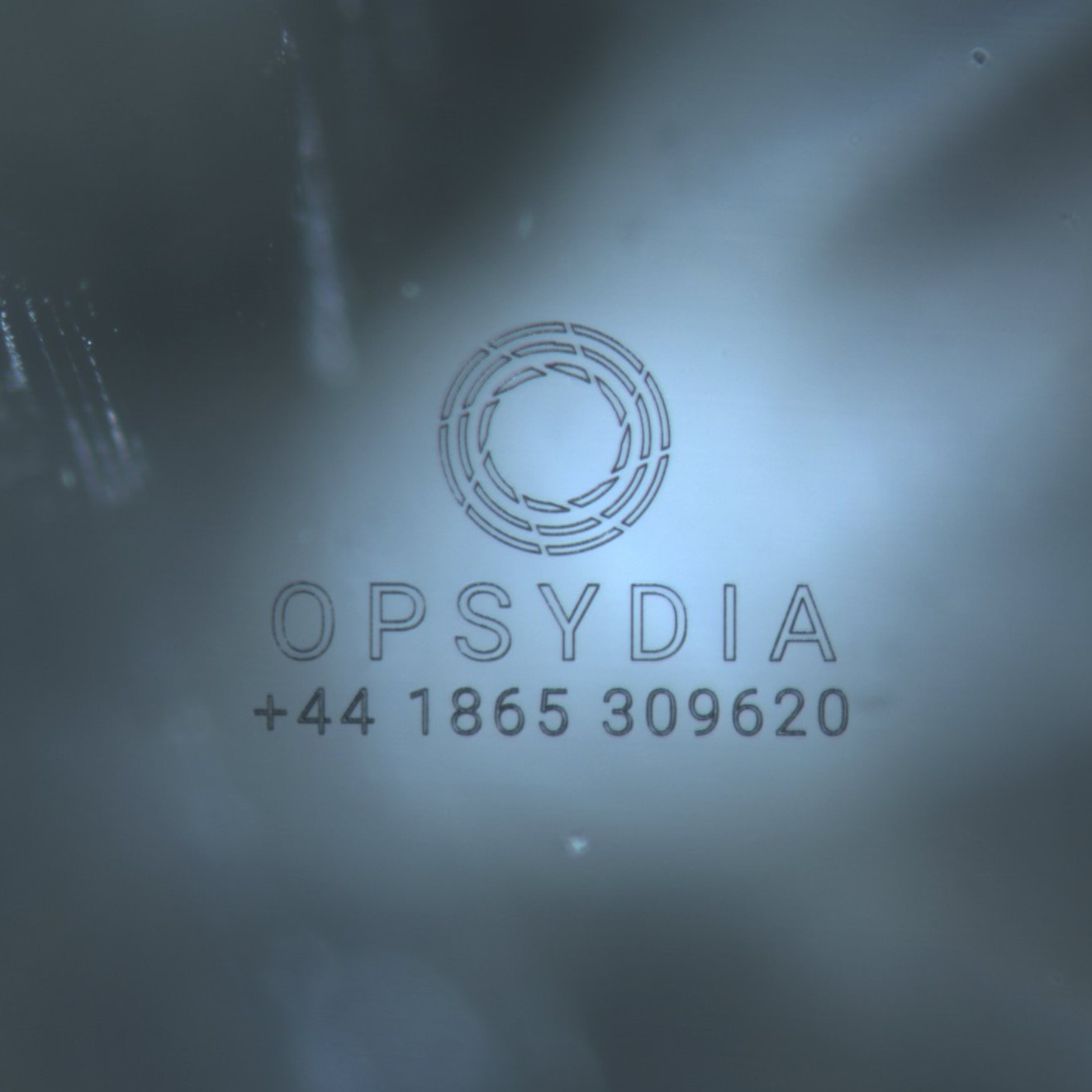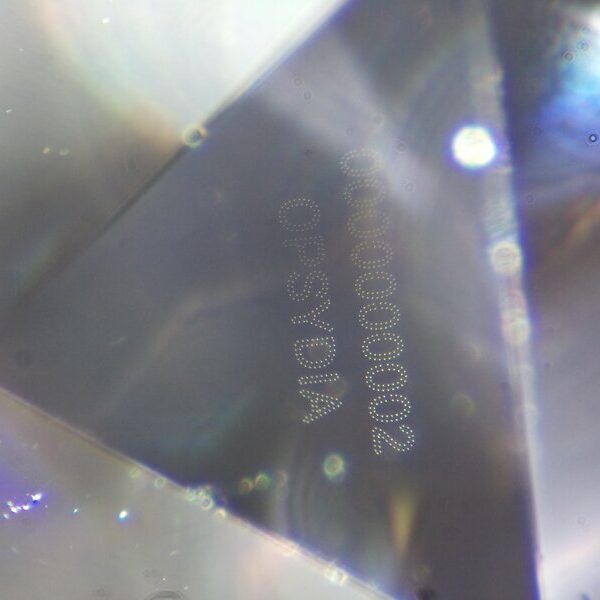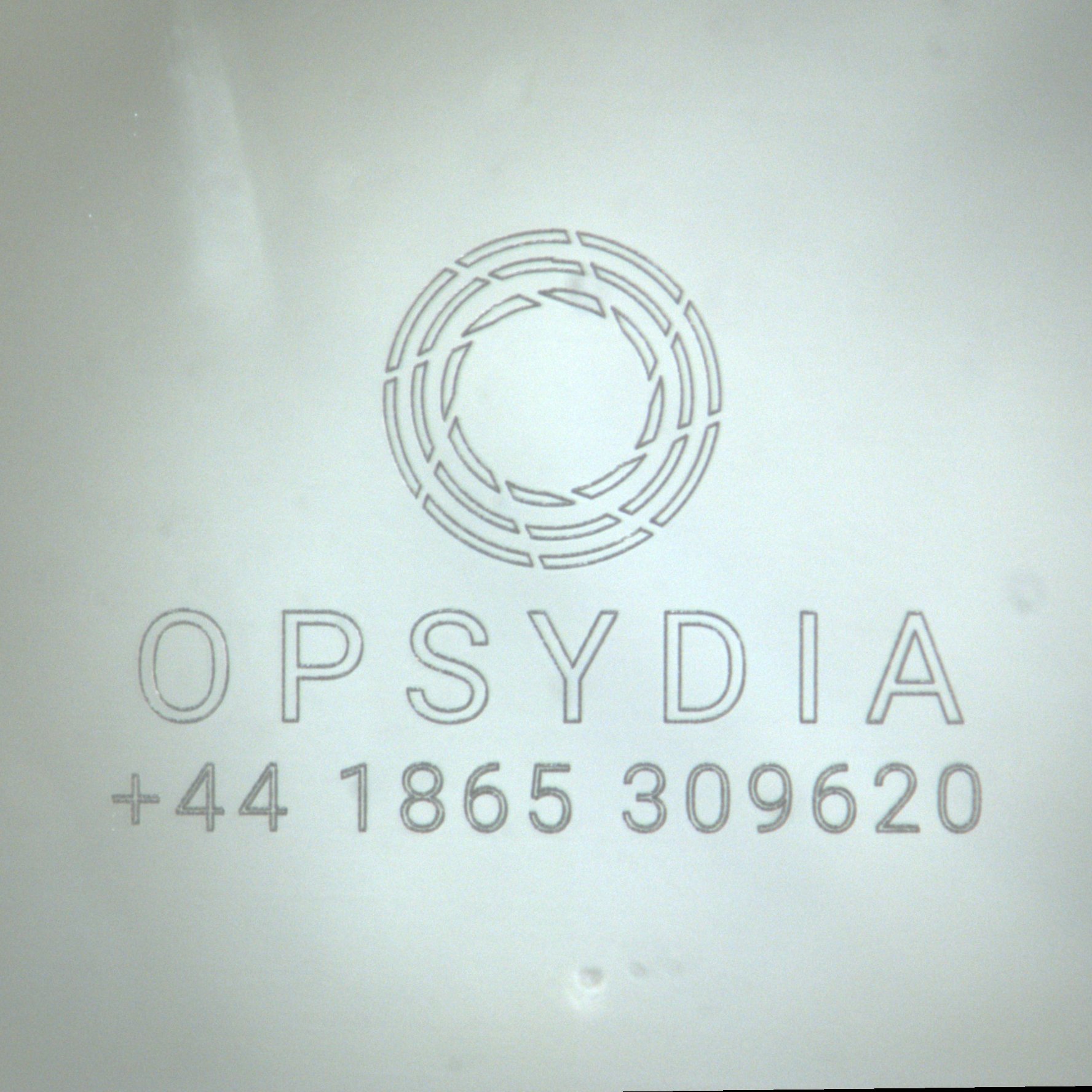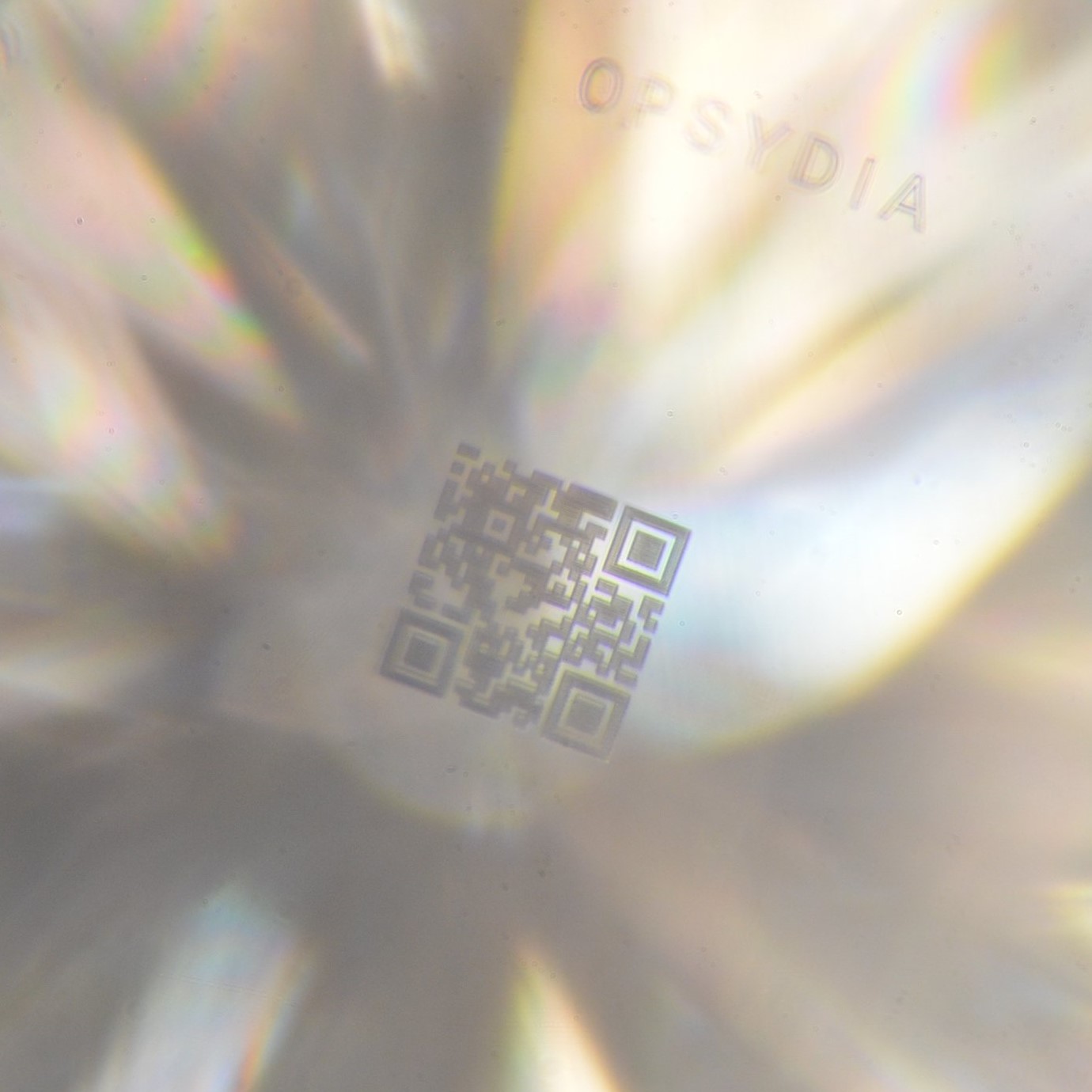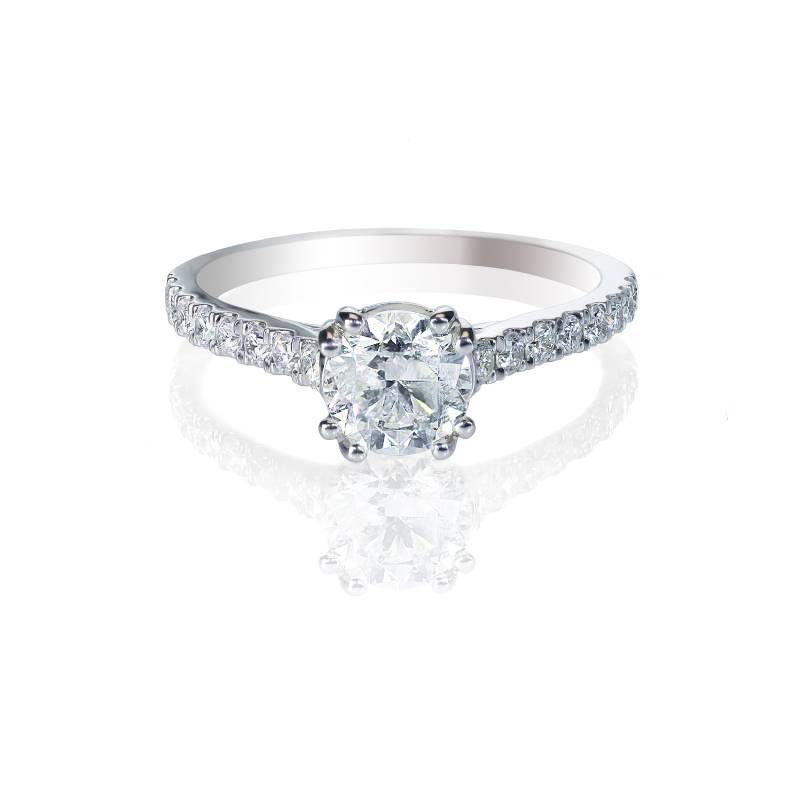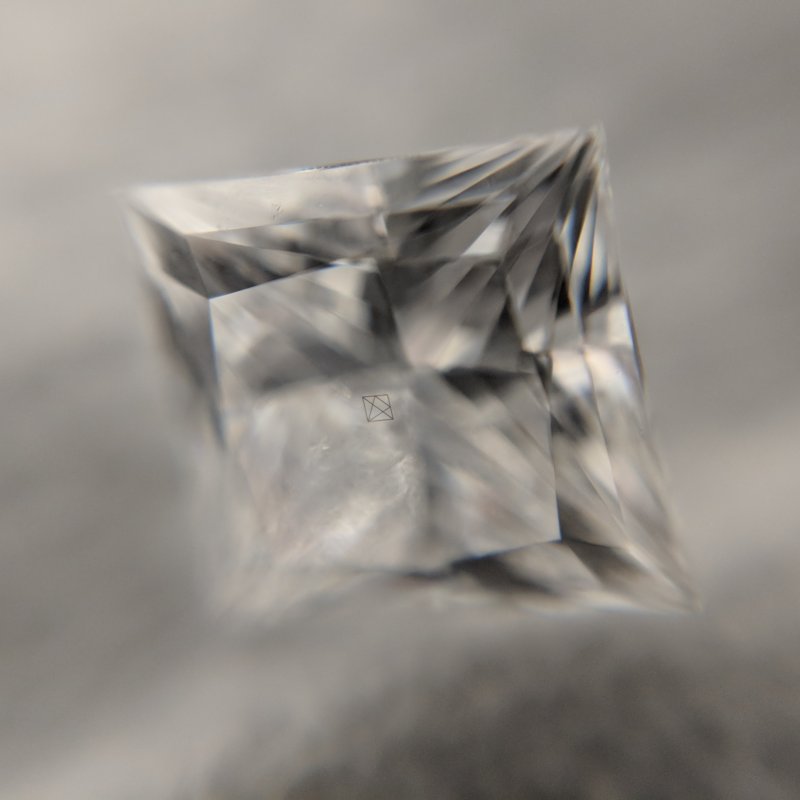Securing the Identity of Diamonds
Our pioneering Systems place unique identity features, known as identifiers, on and beneath the surface of gemstones. Our sub-surface technology places these IDs without affecting the surface or surface polish. Identifiers can be incorporated into any size gemstone from significant down to melee, both at loupe visible and microscopic sizes, to secure a gemstone’s identity, support transparency initiatives and create a physical link between a specific stone and its grading report, blockchain record or branded jewellery origins.
Our Identifiers
Opsydia Identifiers are categorised by their location and/or visibility: Surface ID, Nano ID or Loupe ID.
A Surface ID (D4000)
Surface IDs are shallow, transparent and loupe visible features on the surface of gemstones. In comparison to existing surface marking technologies, the ultra-high precision Opsydia Surface ID System can create high resolution lines and dots at sizes up to 10x smaller and at shallower depths of <50 nm. This is achieved through clean ablation without the risk of graphitisation or heat damage.
An alphanumeric Loupe ID.
A sub-surface Loupe ID can be viewed with a standard 10x magnification eye loupe. To date, they have been used as part of brand awareness initiatives. These identifiers are larger, more visible and can be used in strategic places, such as the centre of the table, to display a brand logo or quickly distinguish laboratory-grown from natural diamonds.
This group of identifiers can be placed at depths of up to 0.25 millimetres (250 microns).
An alphanumeric Nano ID.
Sub-surface Nano ID features do not affect the clarity grade of gems, even for flawless stones, and are not detectable with a standard grading microscope. Nano ID features can be placed up to 0.18 millimetres (180 microns) beneath the surface of a stone and must be read at >100x magnification or with Opsydia Viewer technology.
Nano ID features have been independently assessed by two leading grading houses, including the Swiss Gemmological Institute (SSEF).
What Can Identifiers Look Like?
The shape, size and location of identifiers can all be customised to suit specific brand requirements or integrate with supply chain initiatives. Three common choices for identifiers are alphanumeric sequences, brand logos and/or coded shapes.
An alphanumeric Loupe ID with the addition of a brand logo design beneath the surface of a diamond.
A Nano ID feature taking the form of a sequence of letters and numbers.
Identifiers can take the form of QR codes within diamonds or other coded features.
Opsydia Systems
Our innovative Systems can create Surface IDs, Loupe IDs and Nano IDs or a combination of all three. They are designed to suit the broadest possible range of businesses in the natural diamond, laboratory-grown diamond and coloured gemstone industries.
Next-Level Diamond Security
Current industry-standard diamond identification is achieved by surface marking the girdle of diamonds, which can be easily polished away or fraudulently replicated. There are many examples of inferior diamonds being marked with false grading report numbers to mask their true identity.
Our permanent, microscopic identifiers are placed beneath a diamond’s surface in a way that can’t be polished away or removed without re-cutting a stone, making efforts to do so uneconomical. This is the next-generation of secure and tamper-proof identification for diamonds.
Supporting Brand Identity
The Opsydia System is a companion to luxury fine jewellery houses who want to secure the identity of their finished pieces, protect against brand counterfeiting and alleviate consumer security concerns.
Our identifiers can take the form of unique brand logos, limited edition collectors’ numbers or dates to demonstrate the authenticity of diamonds and the finished jewellery creations they are in.
Lightbox Loupe Photo
Disclosing Laboratory-Grown Diamonds
Opsydia works with both natural diamond specialists and laboratory-grown diamond businesses. Our unique identifiers support the drive towards complete and honest disclosure and aid grading laboratories, retailers and valuers in distinguishing diamond origin.
For example, the Opsydia System is utilised by Lightbox Jewelry to add a loupe-visible identifying feature to each of its laboratory-grown diamonds for complete transparency.
Coloured Gemstones
Opsydia technology is equally effective when applied to diamonds and coloured gemstones. Our recent projects have included placing brand logo identifiers beneath the surface of melee emeralds without affecting their clarity. To discuss tailoring our Surface or Sub-Surface ID technology to suit your product, no matter the colour, clarity or volumes, speak to a member of the Opsydia team.
Sub-surface ID in a Myne London melee emerald
Your Gemstones in Safe Hands…
Encryption techniques ensure the unique identifiers of one company with an Opsydia System cannot be fraudulently acquired and processed by another Opsydia user. This means your identifiers are always secure, accessible only to you and guarded by our in-house specialists.
Forward Thinking Enterprise
By creating a solution that is unique to the trade and easily deployed across the globe, our technology has won the support of leading miners, manufacturers and grading houses who share our commitment to authentic diamond security.
We are honoured to have been able to collaborate with Opsydia in refining the criteria for a Nano ID so that it can be integrated into diamond grading practices. Diamond traceability and security are important issues in the diamond supply chain, and it is important that such scientific techniques be developed for the trade and to ultimately strengthen consumer confidence."


